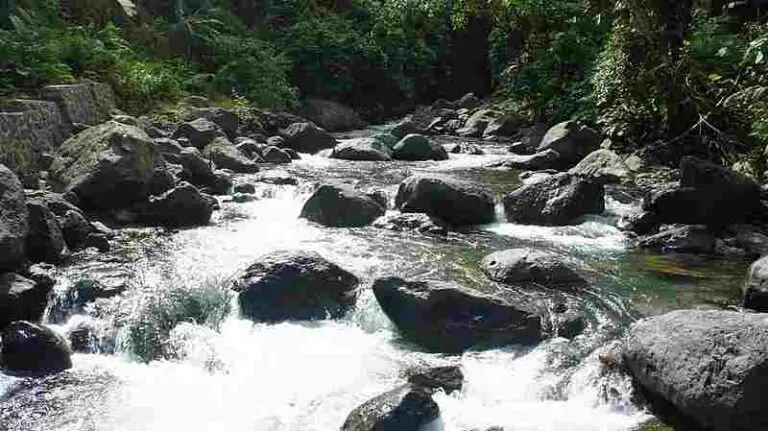5 Examples of Environmental Systems Explained
Examples of environmental systems are; ecologic habitats, thermodynamic structures, peer groups, socio-historical events, and cultural systems.
1). Ecologic Habitats (as one of the Examples of Environmental Systems)
An ecologic habitat is an environmental system that is defined by the presence and interaction of biotic and abiotic factors [4].
Another word for this example of environmental system is the ecosystem.
The ecosystem can be classified as a microsystem, based on its scale of functioning, and its closeness to the individual entity or organism. It must be noted that the microsystem is itself one of the major types of environmental systems, according to the Ecological Systems Theory by Urie Bronfenbrenner (1979), alongside macrosystem, mesosystem, exosystem and chronosystem [3].
Ecologic habitats are a very important example of environmental systems, because they are easily relatable to the conditions that affect organisms, as well as to the assessment of environmental impacts, of activities of organisms like humans.
While being an example of environmental systems, ecologic habitat has several examples that can be used to understand its meaning and context. Examples of ecological habitats include terrestrial biomes like forests, tundras, praires, deserts, and aquatic biomes like saline, brackish and freshwater habitats.

2). Peer Groups
Peer group or peer environment, is a micro-environmental system that comprises of individuals with similarity in age, social status, or background, and their interaction with each other.
Peers are similar individuals that make up a peer group, and peer groups are important aspects or agents of the social environment because of their huge role in shaping the behaviors, tendencies, interests and attitudes of individuals at various societal levels.
Functions of peer groups include; facilitation of social social development, shaping cultural norms and customary behaviors, and ultimately determining socioeconomic development at a national or global scale.
The importance and effect of peer group as an example of environmental systems, is most obvious in developing individuals like adolescents, in which a significant part of social skill and behavioral trends have been traced to peer groups [1] [5].

3). Socio-historical Events (as one of the Examples of Environmental Systems)
Socio-historical events are examples of a type of environmental system called the chronosystem.
The concept of the chronosystem details how temporal events shape the social tendencies and behavioral attributes of individuals. Examples socio-historical chronosystem events are; births, deaths, environmental changes, and sociocultural transitions.
An an environmental system, a socio-historical event interacts with other aspects of an individual's environment, such peer groups, and play a key role in shaping the individual.
4). Thermodynamic Structures
Thermodynamic structures comprise of distinctive thermodynamic systems, their internal, inter-component interactions, and their external interactions with their environment.
A thermodynamic system is a definable entity that has distinct boundaries across which its internal components may migrate into the external environment, and vice-versa.
An example of a thermodynamic system interacting with its environment is a flask containing hot fluid that slowly cools down by losing thermal energy to the table on which it is placed (by conduction) and to the atmosphere (by radiation).
The above is a very good example for describing a thermodynamic structure as an example of an environmental system. Here, the environmental system encompasses both the thermodynamic system (flask), the internal components of the system (fluid, thermal energy), and the external environment
Three types of thermodynamic systems are; open, closed and isolated systems. They are differentiated based on their ability or inability to allow matter and energy cross over their boundaries.
The flask on a table is a closed system, which allows energy cross its boundaries, but does not allow matter cross, by keeping its contents securely sealed.
Open and isolated systems allow both and neither matter nor energy to cross their boundaries, respectively.
Thermodynamic structures are classic for explaining environmental systems from a scientific point of view.
They can be used in the real world to understand the nature and outcomes of human interactions with their environment [6]; as well as to evaluate the environmental impacts when planning sustainable development projects like those involving renewable energy [2].
5). Cultural Systems (as one of the Examples of Environmental Systems)
The cultural environmental system, also called cultural system or cultural environment, is an environmental system that comprises of the beliefs, interests, norms and behaviors or trends in a societal, ecological or technical structure.
Cultural environment is an example of a macrosystem, which again is one of the main types of environmental systems based on ecological systems theory.
Types of cultural environment are; material, non material, complex, simple, permanent and transitional environments.
Elements of cultural environment include; values, behaviors, norms, attitudes and beliefs; while components of cultural environment include; religion, nationality, language, demography, and geographic location.
The concept of cultural environmental system is multifaceted because it can be used to explain systems that exist away from the core-social content of human (or animal) behavior, including business-organizational systems.
Conclusion
Examples of environmental systems are;
1. Ecologic Habitats
2. Peer Groups
3. Socio-historical Events
4. Thermodynamic Structures
5. Cultural Systems
References
1). Adimora, D. E.; Akaneme, I. N.; Aye, E. N. (2018). "Peer pressure and home environment as predictors of disruptive and risky sexual behaviours of secondary school adolescents." Afr Health Sci. 2018 Jun;18(2):218-226. Available at: https://doi.org/10.4314/ahs.v18i2.4. (Accessed 16 March 2023).
2). Bilgen, S.; Kaygusuz, K.; Sari, A. (2008). "Thermodynamic Aspects of Energy Systems and Sustainable Development." Energy Sources Part A(4):325-333. Available at: https://doi.org/10.1080/15567030701548778. (Accessed 16 March 2023).
3). Crawford, M. (2020). "Ecological Systems Theory: Exploring the Development of the Theoretical Framework as Conceived by Bronfenbrenner Article Details." Available at: https://doi.org/10.33790/jphip1100170. (Accessed 16 March 2023).
4). Piculell, B. J.; Hoeksema, J. D.; Thompson, J. N. (2008). "Interactions of biotic and abiotic environmental factors in an ectomycorrhizal symbiosis, and the potential for selection mosaics." BMC Biol 6, 23 (2008). Available at: https://doi.org/10.1186/1741-7007-6-23. (Accessed 16 March 2023).
5). Tomé, G.; Matos, M.; Simões, C.; Diniz, J. A.; Camacho, I. (2012). "How can peer group influence the behavior of adolescents: explanatory model." Glob J Health Sci. 2012 Feb 29;4(2):26-35. Available at: https://doi.org/10.5539/gjhs.v4n2p26. (Accessed 16 March 2023).
6). Wenjie, L.; Reinout, H.; Gjalt, H. (2012). "Thermodynamic analysis of human–environment systems: A review focused on industrial ecology." Ecological Modelling, Elsevier, vol. 228(C), pages 76-88. Available at: https://doi.org/10.1016/j.ecolmodel.2012.01.004. (Accessed 16 March 2023).





